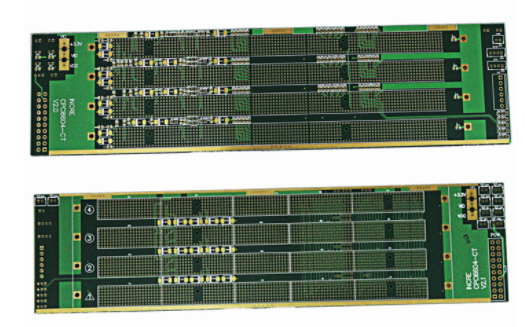Create grooves and non-circular hole pads on multilayer circuit boards
The circuit board manufacturer will show you that in the AD6.3 version and subsequent versions, grooves and non-circular hole pads can be created, and grooves and square pads can be dug.
The detailed drilling type can be seen from the manufacturing steps. Place special string symbols on your multilayer circuit board, and add output instructions on it, and place legend string symbols on the DrillDrawing layer.
Note: If the latest software version supports output processing file detection, it is best to check your (multilayer circuit board) PCB processing file to see if there are grooves on your board. In addition, the most common method used in the earliest version includes describing the trench in the mechanical layer or the solder mask, using text descriptions. Some designers will place overlapping pads or vias in the through hole to define the area of the drilling output, but this may cause the drill to be damaged.
When the irregular hole manufacturing method is different from the next board structure, you will find that your board structure is more suitable to be processed. So there are three ways to define the groove

Add detailed multilayer circuit board processing information to the mechanical layer
Add multiple overlapping pads or vias
Apply CAMtasticNCDrill feature
For this design example, the mechanical layer is usually used to describe the groove information
Detailed information can be found in PlatedRouteDetails of the mechanical layer. Here you can see the wiring connection to the grooves of components J1, J6, and J2S. When you switch to single layer mode, you can see the initial settings of each layer (shortcut to switch to single layer mode: shift, s)
The wiring details are included in the component, so the component will be moved when switching.
Before adopting this route, check the multilayer circuit board factory to see if the set method can be accepted.
For this step, the pad and groove area must have been established in the following sufficient supporting information to the processor:
Multi-layer pads with holes are set to 0 unit, which is the default setting pad area
The starting and ending pad positions are located at the end of the groove position, and the aperture size for these pads should be the same as the groove size.
Place a line on the mechanical layer of the plating channel details from the starting center point to the end of the pad. The width of the line refers to the width of the trench cut.
You also need to think carefully about the inner plane connection of the trench pad, leave enough space for the inner plane to place the physical connection, and the thermal pad and the empty pad need to be set manually. In this PCB multilayer circuit board example, thermal pads have been used-manually create arcs and lines, see pad 1 of J6 for details.
The connection rule of the power plane connection set for the pad can be directly connected. As for the design rules, check the power plane connection type setting rule settings to directly connect to these grooves, (rule: PlaneConnect_Obround_Pads, add an already set class to the pad in the design> class can be set in the rule more easily.) When assembling to the board, if you cannot easily connect to the thermal pads, you can choose a simple option to connect directly to these trench pads.
Finally, the trench pad cannot be connected to the plane. For example, pad 2 and pad 3 on J6 need to be coated with copper on the cut empty area, so add a line or other object as a flying line in the cut area to connect the inner electrical layer . Because the plane is a negative output.
When you export your Gerber file or ODB++ file, carefully check the connection of the internal electrical layer, remember to include the Platedroutingdetails mechanical layer, and remind your electronic board manufacturer to pay attention to the groove pads on the PCB multilayer circuit board.